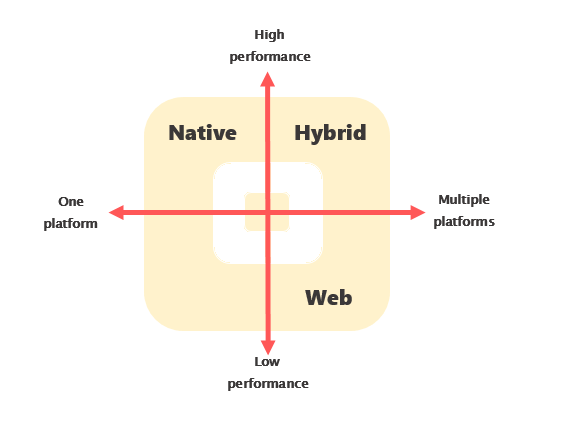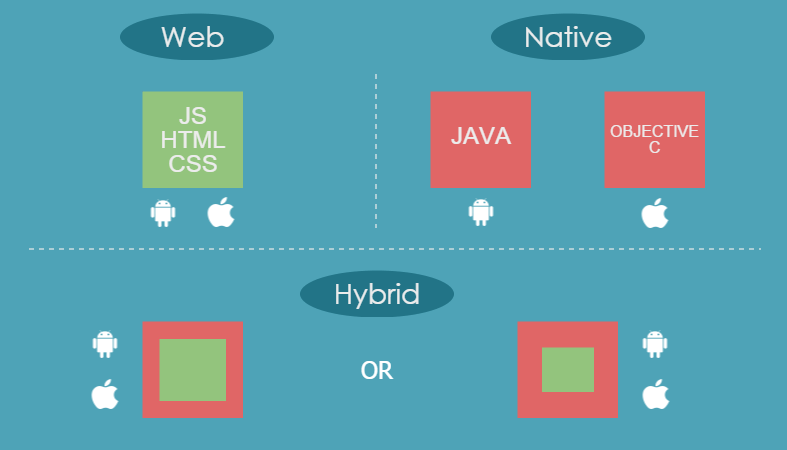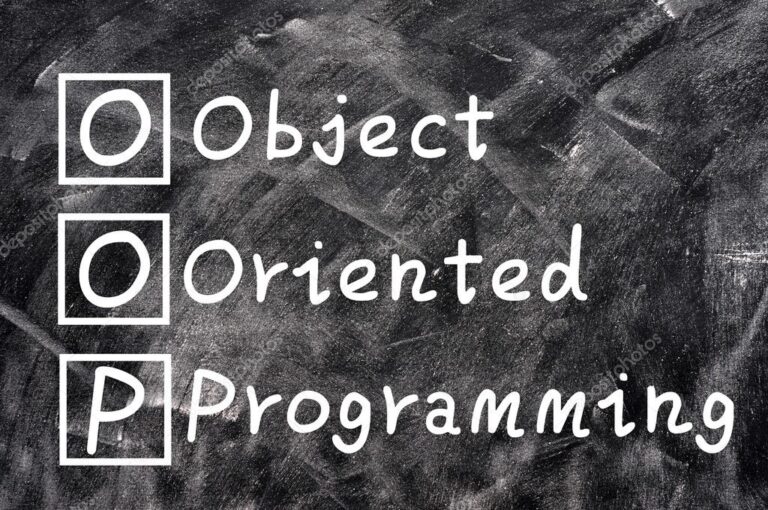The reason why people who wish to develop their apps often don’t know which way to go is best is because, for each of the 3 methods, there are advantages and disadvantages with the developer’s problems ranging from such things as budget, liability exposure, rules, performance, and much more. There aren’t any guideposts or best practices.
Even if you have the money to spend, you can find yourself spinning your wheels. Each methodology is unique and works best in certain niches. So, when you come right down to it deciding a way to develop your apps, you must first think, which features added advantage is are the most important to you.
In this article, we are going to help lift away the fog and you’ll have a clearer idea of what is being done and then you can decide, which path to take when you go about creating Apps for your clients.Here is a diagram that shows the 3 methods of creating an app. They are web, native, and Hybrid.
Web app – works on any platform
A web app looks just like a web page and is written in the latest incarnation of HTML5, and JavaScript these technologies are used to create the front end of the app, while Ruby or PHP are used to create the back end.
For, smartphone users it’s the same as downloading an app that is written in the native language of the cell phone.
You download the app’s icon instead of a piece of code and it has adds the icon and link onto your screen that is no different from any of the other hundreds you may already have.It looks just like other apps and downloads the same way from websites like those you download through iTunes, the app store or Google Play.
One of the major advantages of creating a web app is that you code it once using the development languages mentioned above and your app will work on any device no matter what platform it is running on.
You don’t need to load any extra drivers or support packages as it runs via your web browser. This makes it independent of the make and model of smartphone you own.It is relatively immune to transitions from going from an older smartphone to a newer one.
This will make the fashion conscious among us very happy, as you don’t have to update anything when you buy a new cell phone. So, that means if you find an app you like, it can follow you through multiple changes in your smartphone tastes.
This requires no licensing and this provides you another advantage as you don’t have to pay any expensive upgrade costs which seem to occur with regularity for PC based applications.The fact that the web app runs on your web browser may not be the end all solution to running such apps.
There are 3 major disadvantages:
- Everything will be slowerThe App wouldn’t work offline
- The biggest problem is that You can only download it from a web page to your smartphone.
This means you are outside the ranking systems that the smartphone download sites use to rate various apps.You wouldn’t get the exposure that apps, which download from the venues, we talked about earlier have, your revenue, and your brand identity could suffer because of this.
You will have to find other routes to make Netizens aware of your app’s existence, benefits, and features that ordinary apps enjoy automatically when sold via the 3 major online outlets.
Your Dream Website Awaits!
Native app- high performance
Native apps will only work on one platform at a time. This requires different programming languages based on the particular operating system/platform that the smartphone you are targeting uses.
For example for Android, you need to develop your app in JAVA. For Apple, you need to use Objective-C or the newer SWIFT language. This means that if you want a nap that runs on both platforms you need to have two versions written.
However, they are much faster, powerful and they run locally. They do not require an Internet connection like web apps need in order to function.Since they are sitting on the device itself, they can make use of the various hardware features such as cameras, GEO-location, compass, calendaring, gesture, handwriting, and others.
However, in order to download them. It is necessary for you to attach to one of the venues lit iTunes and download from there.This is just like you heading to your favorite mall and going to a brick-and-mortar store and purchase, what you need.
In addition, like a mall store, they have limitations, rules, and fees that they charged the various vendors. Therefore, for you the developer it’s like opening your own store at the mall except here on the Internet.
However, this is where all the customers are nowadays and if you want to play the game and work your way up to being top dog in your niche. You have to pay the price.
BTW, there is a third platform out there. But, we won’t elaborate on it today, as Windows is not making a major impact at this time. The apps for Windows handhelds devices are a small fraction of the total market and are developed using C# and as of this writing, the developer/app market is limited.
Hybrid app – mixing the best of both worlds
Developing a hybrid at can be a good solution for those who wish to include the advantages of both we had and native in one app. A hybrid app is actually a native frame wrapped around a web app. In that way, most of the app is written using HTML5 and JavaScript while only a small segment of code is created using Java or Objective–C.
This means it can be downloaded like an app from the app store etc. and lets you have the advantages that let it reach a large customer base as well is a central location/mall where everybody goes.
PhoneGap is the name of one such app framework. Depending on the native framework that you’re using, you can find it in the app stores and have limited access to the handheld’s features.
There are also larger frameworks out there and they are more robust, work with more platforms, and use more of what each smartphone has to offer.This methodology saves you time as well as development costs when you’re developing for numerous platforms and you want an app that runs faster and uses the features of the handheld on which is written for.
Final words
Today, you’ve seen 3 methodologies that allow you to develop your app in various environments, hardware platforms, and using a variety of development languages.The 3 have advantages, disadvantages, and you have to choose wisely the one that fits your business, target market, along with the type of app that you are creating.Once you have decided on the various benefits, features, and uses of your app, you can then decide which of the three methodologies best fits what you’re trying to accomplish.For example, many of the newer games written for smartphones utilizes embedded links that allow the player to purchase cheats, power-ups, and additional features for a minuscule price.This can add up to millions of dollars as shown by the Candy Crush Saga series of games. This free app generates millions of dollars every year and is an example of a Hybrid that links to a web page to allow the purchasing of the various add-ons as well as pay for play apps.However, it’s all up to you and you can find out more information about the various languages, programming techniques, and the latest news about the app developer industry here at our website.Feel free to browse around and read some of our other cutting-edge articles at your leisure.




























